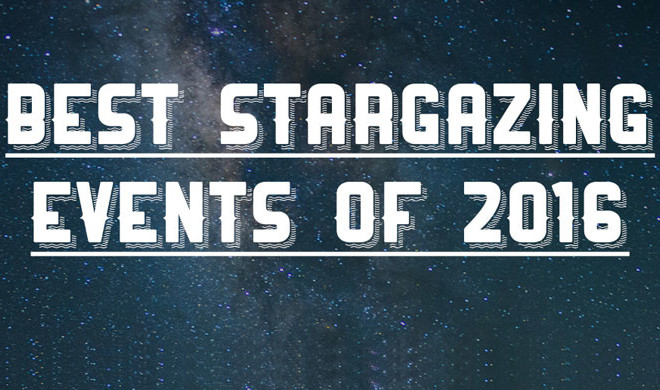 Wide Open Spaces
Wide Open Spaces
Things to Do
The Best Stargazing Events of 2016
Are you an avid stargazer or just looking to plan your camping trips around some stellar action? Here are the best stargazing events of 2016.
The best time to plan a camping trip is around a cosmic event. Where better can you see the sky than the middle of nowhere with no light pollution to speak of? Luckily, we’ve compiled the best stargazing events of 2016 so you can get a head start on planning now.
All of these can be seen from the United States. Below are the descriptions of the stargazing events.

Wide Open Spaces
March 8 – Jupiter at Opposition
So what does it mean when a planet is at opposition? Well, it means that it will be in direct sunlight, making it the most viewable from Earth.
In this case, Jupiter will be directly visible through a telescope, or even binoculars. You may even be able to spot the Great Red Spot with little interference.
May 6-7 – Eta Aquarids Meteor Shower
The Eta Aquarids are actually remnants from Halley’s Comet and because this meteor shower will begin when there is a New Moon (read: no moon visible), the meteors will be in full shining view.
Get your wishes ready! In the Northern Hemisphere, they’ll be traveling around 30 miles per hour.
May 9 – Transit of Mercury
If you live on the Atlantic coast or slightly farther inland, you’ll have the most incredible view of Mercury in broad daylight. It will be visible for the rest of the U.S., but make no mistake that East Coast viewers will be able to see, with appropriate telescope solar filter, Mercury making its way across the sun in the sky.
Bonus tip: Mercury is one of the hardest planets to spot, so this opportunity is once in a lifetime.
May 22 – Mars at Opposition
If you try to view Mars through a larger telescope on May 22, you’ll be in for a treat as it will be close enough to spot the polar ice caps on its surface.
Earth and Mars will be at their closest points on this day, making it viewable from telescope or even binocular.
June 3 – Saturn at Opposition
If you’ve always loved Saturn’s epic rings, then June 3 is the night you’ll want to be in an area with no light pollution and armed with a small telescope.
Saturn will be entirely illuminated by the Sun and fully visible.
August 12-13 – Perseids Meteor Shower
Every summer, the Perseids Meteor Shower lets loose, and 2016 will be no different. Around midnight on the 12th, the shower will really start to roll, with meteors roaring up to 60 miles per hour.
August 27 – Conjunction of Venus and Jupiter
In astronomy terms, when two planets enter conjunction, it means that they are essentially at the same hour angle in the sky. This, then, means that on August 27, Venus and Jupiter will appear to be stacked on top of each other.
Look to the western sky just after sunset to spot just how close these planets will be from one another. Don’t forget your binoculars.
September 3 – Neptune at Opposition
While it will only appear as a tiny blue dot in most lower-strength telescopes, Neptune will actually be the closest to the Earth on this night.
Study up on your astronomy angles before September 3, and you’ll get to the see blue giant.
October 15 – Uranus at Opposition
When Uranus is fully illuminated by the Sun, the bluish green color will be visible through most telescopes.
We wish that you could see the ring around it, but unless you work at an incredibly powerful observatory, most amateurs will only be able to spot the color in the distance.
October 21-22 – Orionids Meteor Shower
Point yourself toward Orion the Hunter on the night of October 21 leading into the 22nd, and check out the meteors that were created from Halley’s Comet.
This meteor shower in particular will be the second brightest of the year, and moving only at 20 miles per hour, so that gives you extra time to make a wish.
December 13-14 – Geminids Meteor Shower and Supermoon
While the Orionids are the second brightest meteor shower, the Geminids are by far the brightest. Combine that experience with blindingly bright Supermoon, and you’ve got yourself a recipe for shooting stars.
Set your telescope to the Moon, though, and try to spot the camera that Neil Armstrong left on its surface. We aren’t promising much, but it will be that visible.


